Coordinated chemokine expression defines macrophage subsets across tissues
- PMID: 38698086
- PMCID: PMC11565582
- DOI: 10.1038/s41590-024-01826-9
Coordinated chemokine expression defines macrophage subsets across tissues
Abstract
Lung-resident macrophages, which include alveolar macrophages and interstitial macrophages (IMs), exhibit a high degree of diversity, generally attributed to different activation states, and often complicated by the influx of monocytes into the pool of tissue-resident macrophages. To gain a deeper insight into the functional diversity of IMs, here we perform comprehensive transcriptional profiling of resident IMs and reveal ten distinct chemokine-expressing IM subsets at steady state and during inflammation. Similar IM subsets that exhibited coordinated chemokine signatures and differentially expressed genes were observed across various tissues and species, indicating conserved specialized functional roles. Other macrophage types shared specific IM chemokine profiles, while also presenting their own unique chemokine signatures. Depletion of CD206hi IMs in Pf4creR26EYFP+DTR and Pf4creR26EYFPCx3cr1DTR mice led to diminished inflammatory cell recruitment, reduced tertiary lymphoid structure formation and fewer germinal center B cells in models of allergen- and infection-driven inflammation. These observations highlight the specialized roles of IMs, defined by their coordinated chemokine production, in regulating immune cell influx and organizing tertiary lymphoid tissue architecture.
© 2024. Springer Nature America, Inc.
Figures
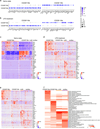



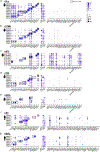




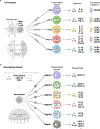
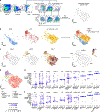

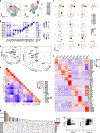

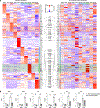


Similar articles
-
Gut-resident CX3CR1hi macrophages induce tertiary lymphoid structures and IgA response in situ.Sci Immunol. 2020 Apr 10;5(46):eaax0062. doi: 10.1126/sciimmunol.aax0062. Sci Immunol. 2020. PMID: 32276965 Free PMC article.
-
Two distinct interstitial macrophage populations coexist across tissues in specific subtissular niches.Science. 2019 Mar 15;363(6432):eaau0964. doi: 10.1126/science.aau0964. Science. 2019. PMID: 30872492
-
Single cell transcriptomic analyses reveal diverse and dynamic changes of distinct populations of lung interstitial macrophages in hypoxia-induced pulmonary hypertension.Front Immunol. 2024 Apr 15;15:1372959. doi: 10.3389/fimmu.2024.1372959. eCollection 2024. Front Immunol. 2024. PMID: 38690277 Free PMC article.
-
The interstitial macrophage: A long-neglected piece in the puzzle of lung immunity.Cell Immunol. 2018 Aug;330:91-96. doi: 10.1016/j.cellimm.2018.02.001. Epub 2018 Feb 8. Cell Immunol. 2018. PMID: 29458975 Review.
-
Understanding macrophage diversity at the ontogenic and transcriptomic levels.Immunol Rev. 2014 Nov;262(1):85-95. doi: 10.1111/imr.12231. Immunol Rev. 2014. PMID: 25319329 Review.
Cited by
-
Differential Fatty Acid Response of Resident Macrophages in Human Skeletal Muscle Fiber and Intermuscular Adipose Tissue.Int J Mol Sci. 2024 Oct 5;25(19):10722. doi: 10.3390/ijms251910722. Int J Mol Sci. 2024. PMID: 39409051 Free PMC article.
-
The Dichotomy of Tumor Control by Recruited and Resident Tumor-Associated Macrophages.Res Sq [Preprint]. 2025 Jul 4:rs.3.rs-6977440. doi: 10.21203/rs.3.rs-6977440/v1. Res Sq. 2025. PMID: 40630529 Free PMC article. Preprint.
-
Linking signal input, cell state, and spatial context to inflammatory responses.Curr Opin Immunol. 2024 Dec;91:102462. doi: 10.1016/j.coi.2024.102462. Epub 2024 Sep 11. Curr Opin Immunol. 2024. PMID: 39265520 Free PMC article. Review.
-
Nerve- and airway-associated interstitial macrophages mitigate SARS-CoV-2 pathogenesis via type I interferon signaling.Immunity. 2025 May 13;58(5):1327-1342.e5. doi: 10.1016/j.immuni.2025.04.001. Epub 2025 Apr 25. Immunity. 2025. PMID: 40286790
-
Tissue signatures of human macrophages during homeostasis and activation.bioRxiv [Preprint]. 2025 May 28:2025.05.23.655632. doi: 10.1101/2025.05.23.655632. bioRxiv. 2025. PMID: 40501660 Free PMC article. Preprint.
References
MeSH terms
Substances
Grants and funding
- R01 HL135001/HL/NHLBI NIH HHS/United States
- S10 OD030242/OD/NIH HHS/United States
- P20 GM130454/GM/NIGMS NIH HHS/United States
- 5P30CA023108/U.S. Department of Health & Human Services | NIH | National Cancer Institute (NCI)
- S10 OD025235/OD/NIH HHS/United States
- P30 CA023108/CA/NCI NIH HHS/United States
- S10 1S10OD030242/U.S. Department of Health & Human Services | National Institutes of Health (NIH)
- T32AI007363/U.S. Department of Health & Human Services | National Institutes of Health (NIH)
- R35 HL155458/HL/NHLBI NIH HHS/United States
- T32 AI007363/AI/NIAID NIH HHS/United States
- R01 HL115334/HL/NHLBI NIH HHS/United States
- NIH S10 S10OD025235/U.S. Department of Health & Human Services | National Institutes of Health (NIH)
- NIGMS P20GM130454/U.S. Department of Health & Human Services | National Institutes of Health (NIH)
- BOF.MET.2021.0007.01 (Contract Nr: 01M01521)/Universiteit Gent (UGent)
LinkOut - more resources
Full Text Sources
Molecular Biology Databases
Miscellaneous

